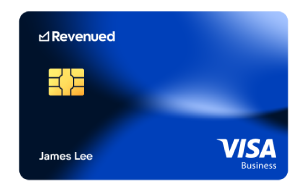What is Overdraft Protection? Understand Why Your Business Needs it
What is Overdraft Protection? Understand Why Your Business Needs it
Last week, you wrote a check for your monthly office supplies delivery. Unfortunately, you’ve forgotten about that check between then and now — it just cleared and caused your account to overdraft. What’s even more unfortunate? You don’t have overdraft protection and were just hit with a hefty overdraft fee. This frustrating situation causes you to wonder whether overdraft protection is something you should look into.
What is an overdraft in business? Overdraft protection is a financial service where banks extend a business overdraft line of credit to cover transactions exceeding your available balance. Overdraft protection kicks in when the business writes a check or completes a transaction for more than the amount in the account. It links your eligible checking account to the bank’s line of credit to cover the amount overdrafted. This business overdraft protection activates per transaction, with typical fees averaging $35, ensuring payments clear even when you have insufficient funds.
Current Overdraft Protection Policy
In 2010, policymakers forced banks to make overdraft protection an opt-in service, prohibiting them from automatically enrolling customers in programs that charge hefty fees whenever there are insufficient funds to cover transactions. Having overdraft protection for business lets your company continue making purchases (including ATM withdrawals) despite a negative balance, though fees apply. It’s also important to note that overdraft protection only covers debit card transactions and ATM withdrawal, not checks or other automatic debits from your account.
Benefits of Overdraft Protection
Business overdraft protection offers certain advantages, particularly for small businesses managing cash flow gaps or avoiding declined transactions.. Before you opt-in to overdraft protection at your bank, you should understand why your business would need it and whether it’s the right decision for your financial strategy.
- If your business is in a position where your card could potentially get declined, you may want to consider opting for overdraft protection. Having your business card declined could be an embarrassing situation in front of clients, vendors or suppliers.
- Choosing to use overdraft protection could protect your business between paychecks — although at a price. Maybe money is tight for you between invoices getting paid. This temporary access to cash can be helpful during a financial gap or if an unexpected expense comes up.
- You may also consider opting in if you’d like to have cash available for emergencies. It’s more common for businesses to use overdrafting to pay bills for essentials or emergencies, such as product loss or new software upgrades.
Controversy and High Fees
However, there is some controversy around all three of these strategies. Some businesses see overdraft protection as a way to borrow money when they’re short on cash instead of going through standard credit rules and regulations (e.g., applying for a line of credit and making payments on said credit card).
Overdraft protection service can also encourage overspending. Even though it’s convenient, it can take away from the responsibility of monitoring your finances to understand what funds are available in your accounts, and whether or not you can actually afford these transactions.
If you decide to opt-in to overdraft protection, know that these fees can add up…and they’ll do so quickly if you haven’t realized your account is overdrawn. Did you take a client out to lunch? That $20 sandwich and salad could turn into $60. Or did you buy a round of coffee for the staff? That $15 latte run just cost you $50.
Overdraft Protection Alternatives
Some banks, like Wells Fargo's overdraft services, now waive fees on transactions under $5, though broader overdraft protection alternatives are available. Other banks have a daily limit on how much they will charge you for overdrafts. While this is a step in the right direction, there are alternatives to overdraft protection that could be more beneficial for your business.
If you don’t anticipate your business needing overdraft protection frequently, linking your checking account to a credit card, savings account, or line of credit is also an option. In such cases, funds are pulled from linked accounts, reducing reliance on costly overdraft for business accounts and minimizing fees. In this case, charges are smaller, averaging $10 instead of $35.
Account Management Tips
To avoid triggering a business bank account with overdraft, proactively monitor your account balances and scheduled payments. Monitor your accounts before you pay vendors and suppliers, and before you expect any automatic payments to occur. Keep a running list of monthly, quarterly, or yearly payments and when they are due to avoid any surprise transactions.
Many (if not all) banks allow you easy access to online and mobile banking, which is most commonly used to check your balances and any funds coming in and out of your accounts. These platforms allow you to set alerts that notify you when your account falls below a predetermined amount. For example, you can set an alert to notify you when your account drops below $500. Even if you choose to opt in to overdraft protection for your business, you can still set these alerts to help avoid those hefty fees, only using the service when you don’t have another option.
While business overdraft protection can be useful, it’s optional and may not suit every business’s financial strategy. If you feel tempted to use overdraft protection but are wary of the fees, ask your bank to turn it off on the checking account you use most. Turning off overdraft protection could save you money over the year while motivating you to stay in tune with your business finances.
RELATED ARTICLES
Tariffs and Small Business: Voices from Across America
Learn MoreHow Important Is It to Have Good Personal Credit as a Business?
Learn MoreExpenses Not To Be Charged on a Business Credit Card?
Learn MoreHow to Remove Hard and Soft Credit Inquiries from Your Report
Learn More
Boost your spending power with the Revenued Business Card
Only pay for what you use at gas stations, hotels, supply stores, supermarkets and more.
Take control with the Flex Line
Check your available balance online and request a cash draw with the tap of your finger, anytime.

